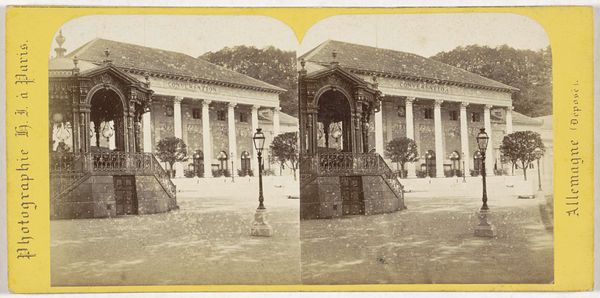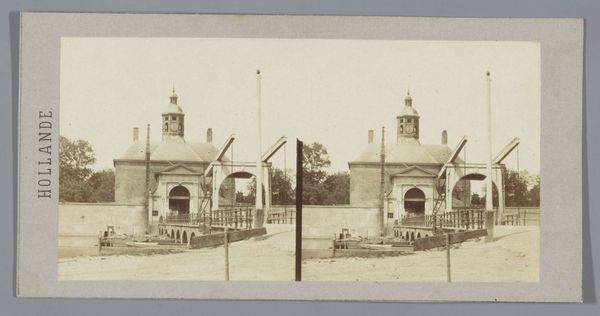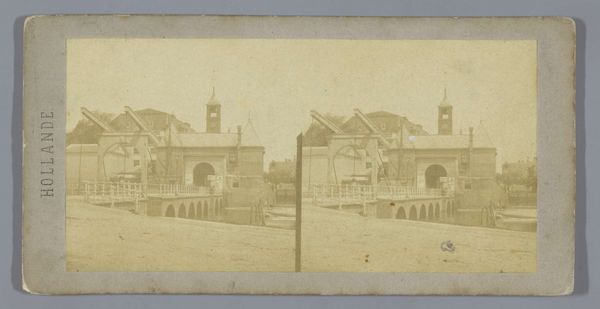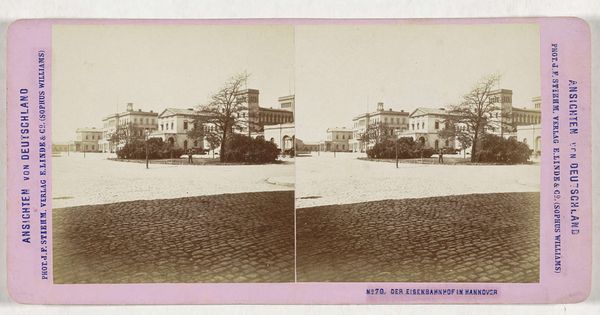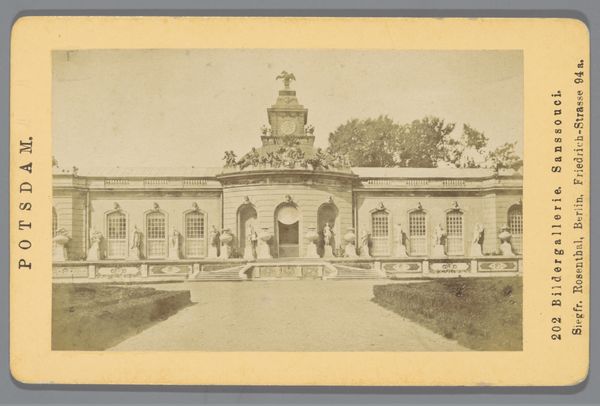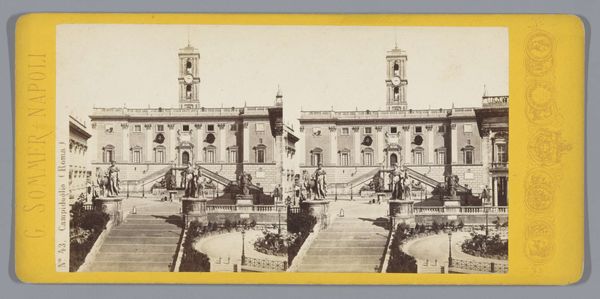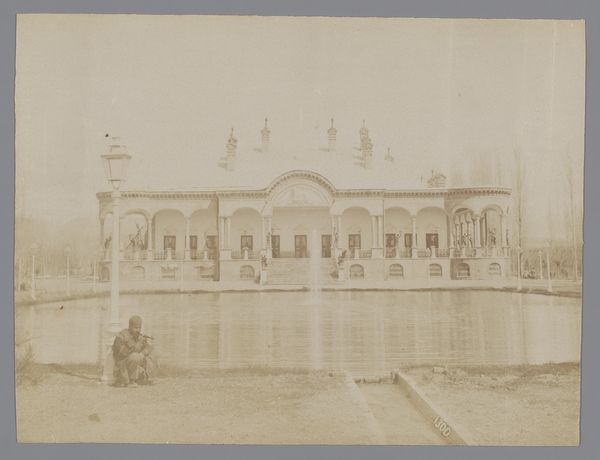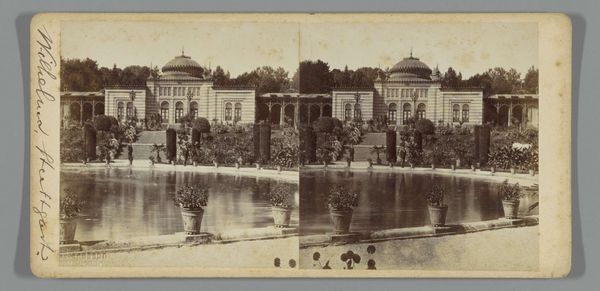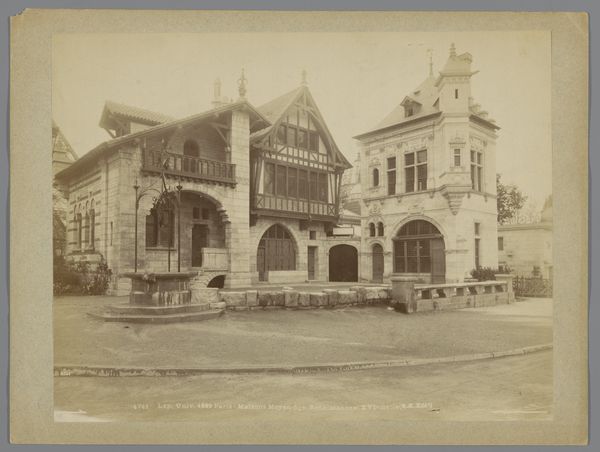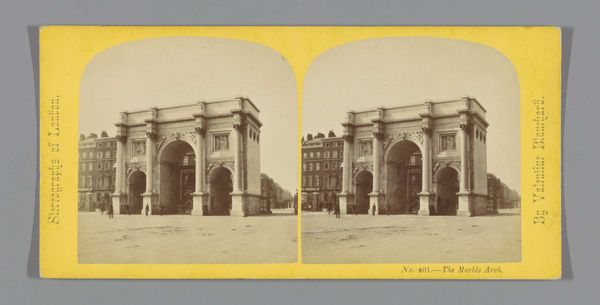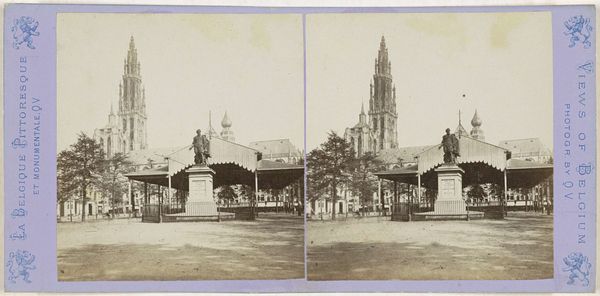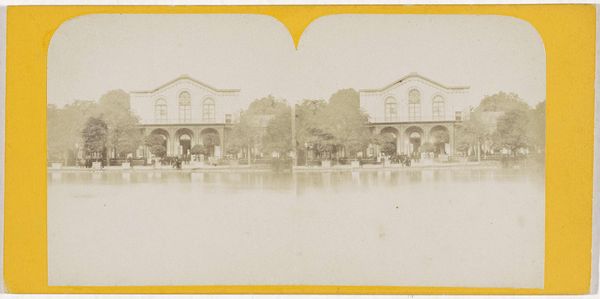
Dimensions: height 85 mm, width 175 mm
Copyright: Rijks Museum: Open Domain
This albumen print, showing a view of the Leidsepoort in Amsterdam, was made by Pieter Oosterhuis. Stereoscopic images like this one were popular in the mid-19th century, offering viewers an immersive, almost three-dimensional experience of far-off places. But this isn’t some exotic locale. It's Amsterdam, around the time photography was becoming more accessible to a wider public. Oosterhuis was a key figure in that development in the Netherlands. Consider how the image creates meaning. The Leidsepoort was one of the city’s main entrances, a place of trade and transition. The lone figure on the bridge adds a human element, but also emphasizes the gate's imposing scale. We might ask, what was the public role of photography at this time? Was it a tool for documentation, for artistic expression, or both? The social conditions of artistic production are key to understanding its place in the world. The image becomes not just a view, but a cultural artifact, and it is the historian's role to unpack these layers of meaning.
Comments
No comments
Be the first to comment and join the conversation on the ultimate creative platform.
